Early WWII DIJON - MULHOUSE "France to German Operations" Allied Infantry and Armored Division Combat Map*
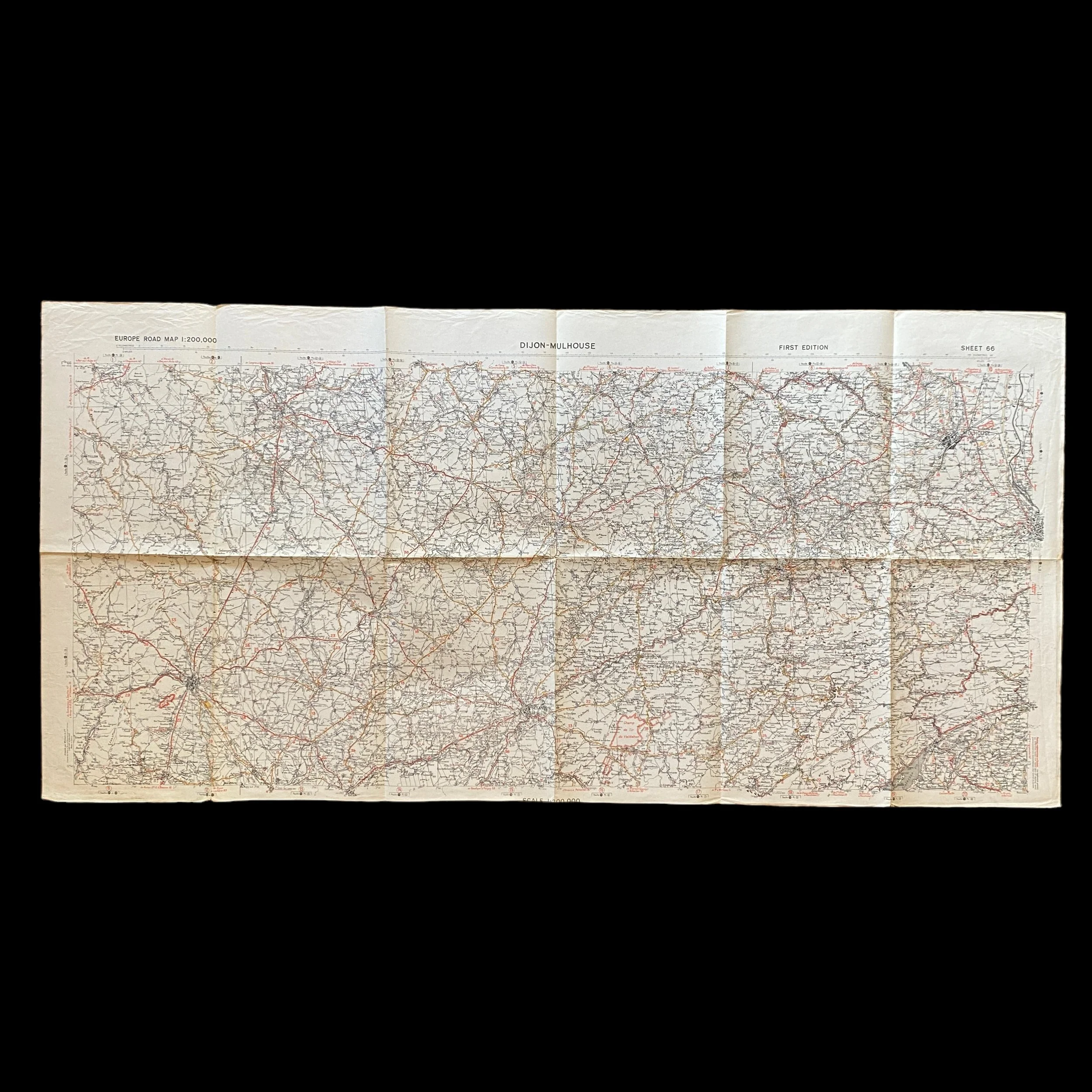




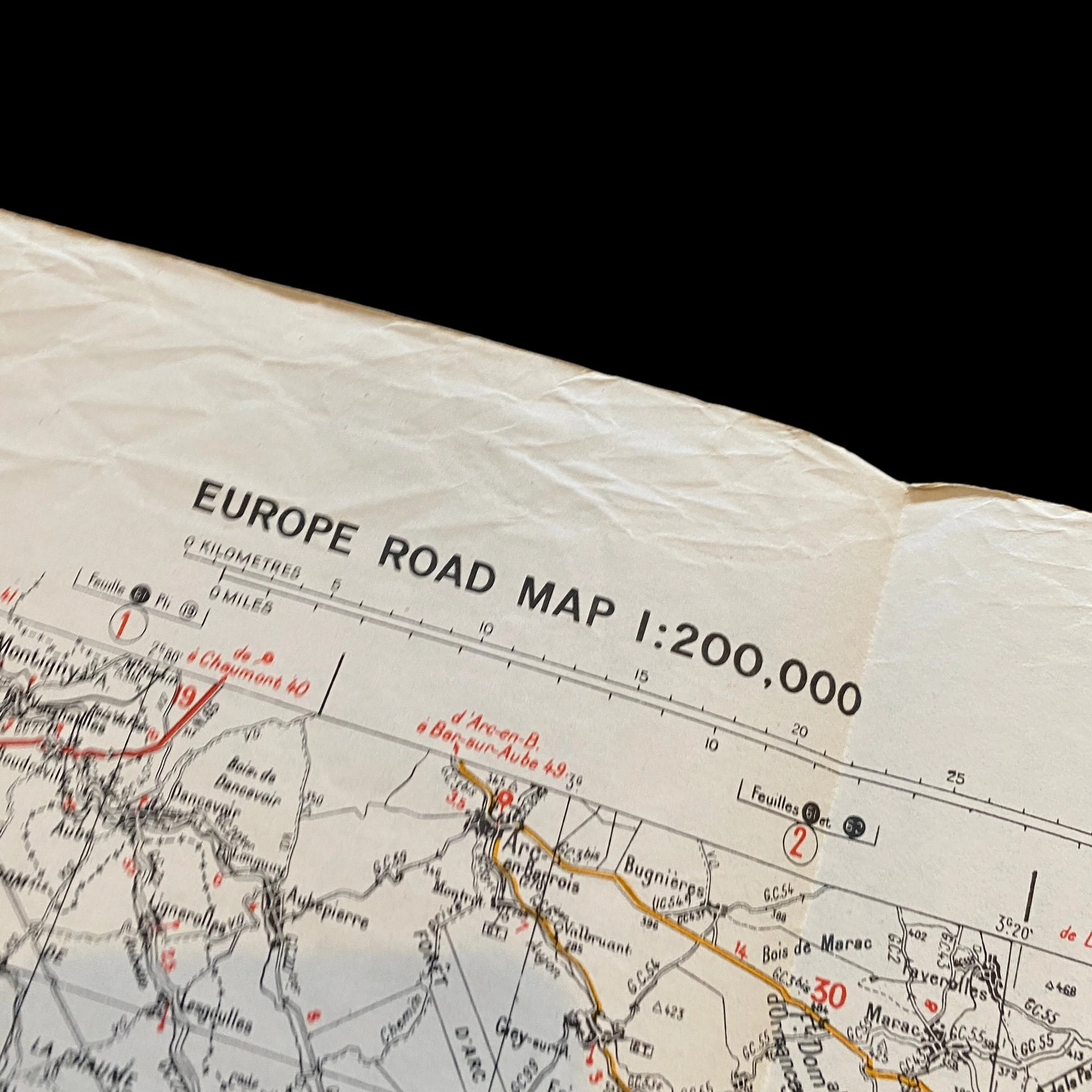




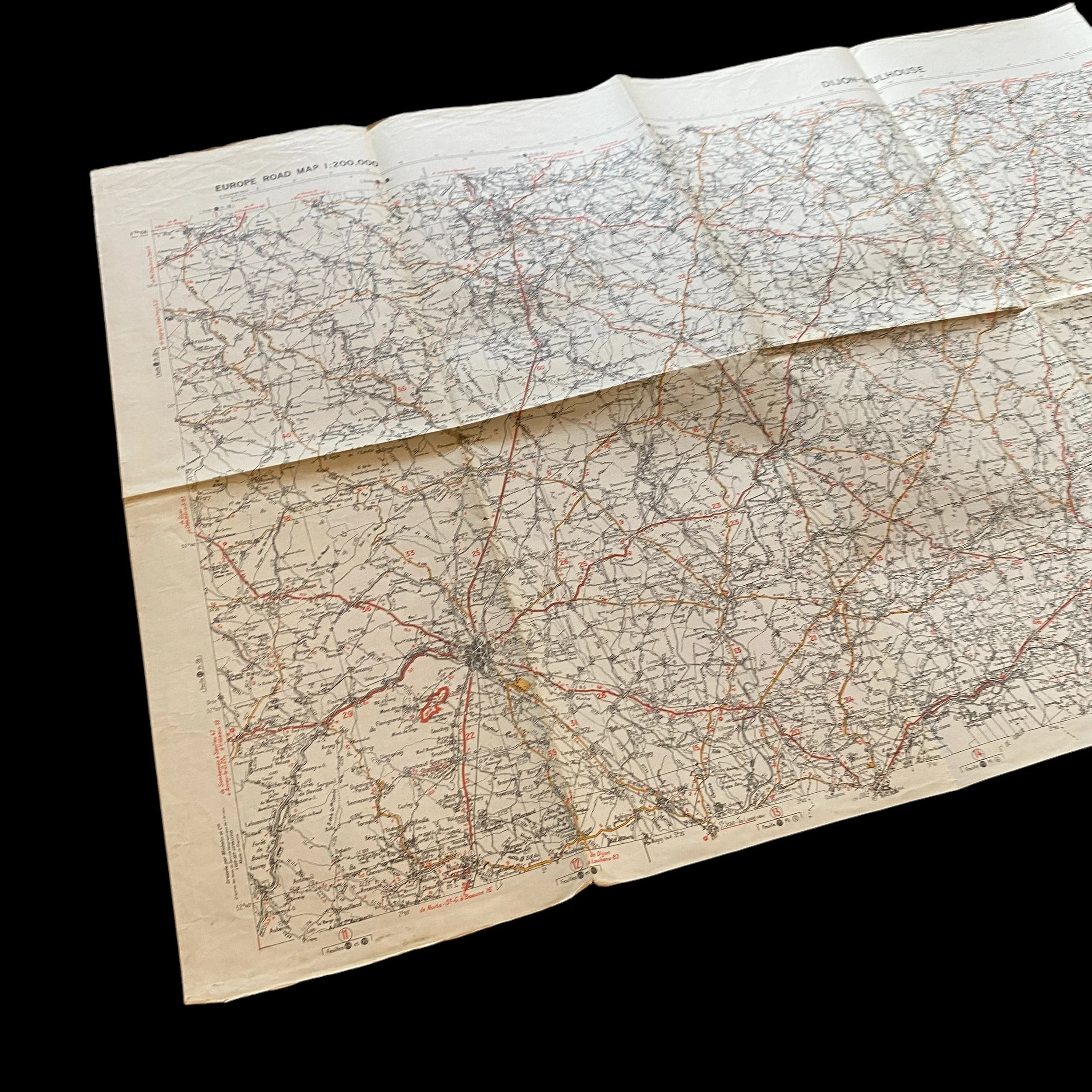
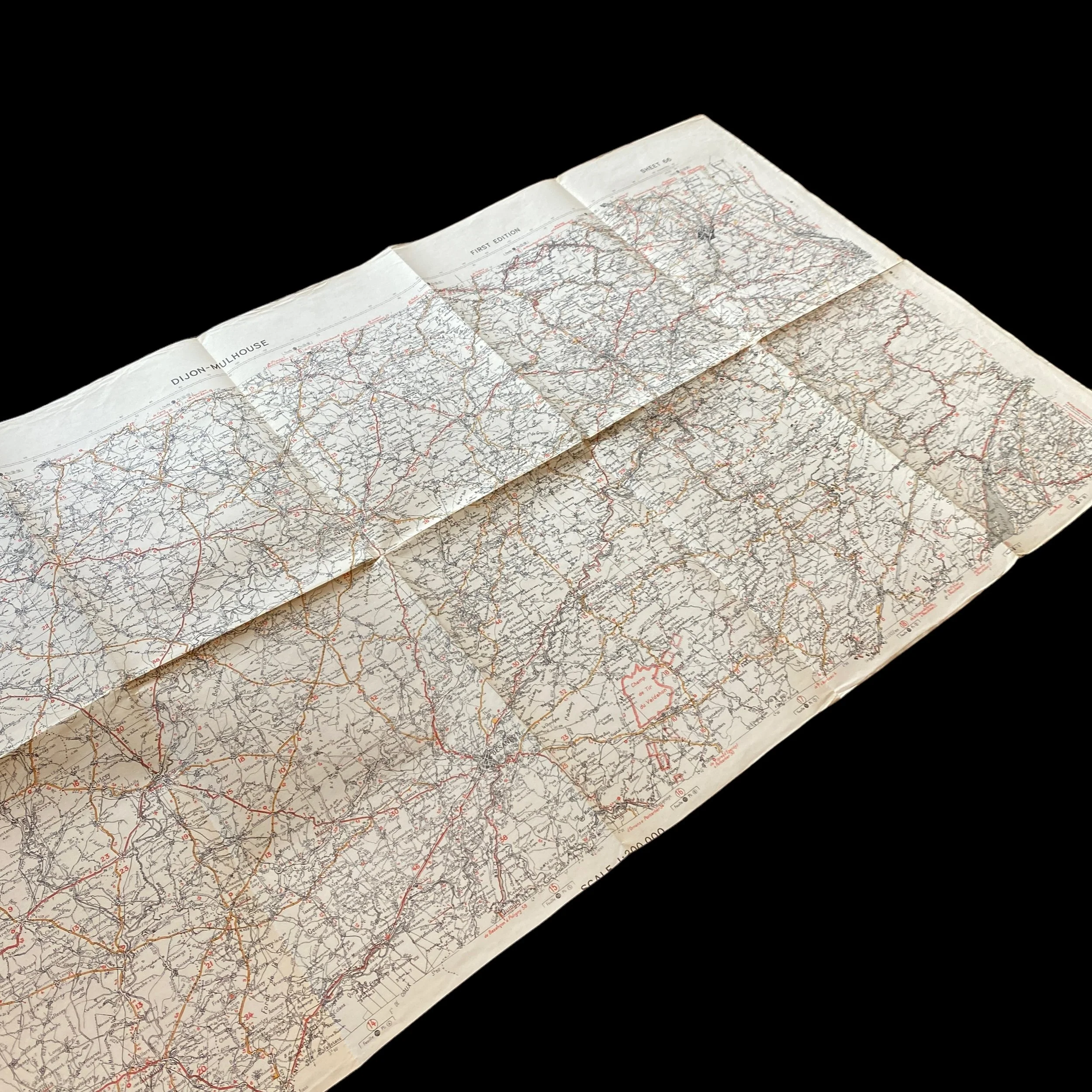










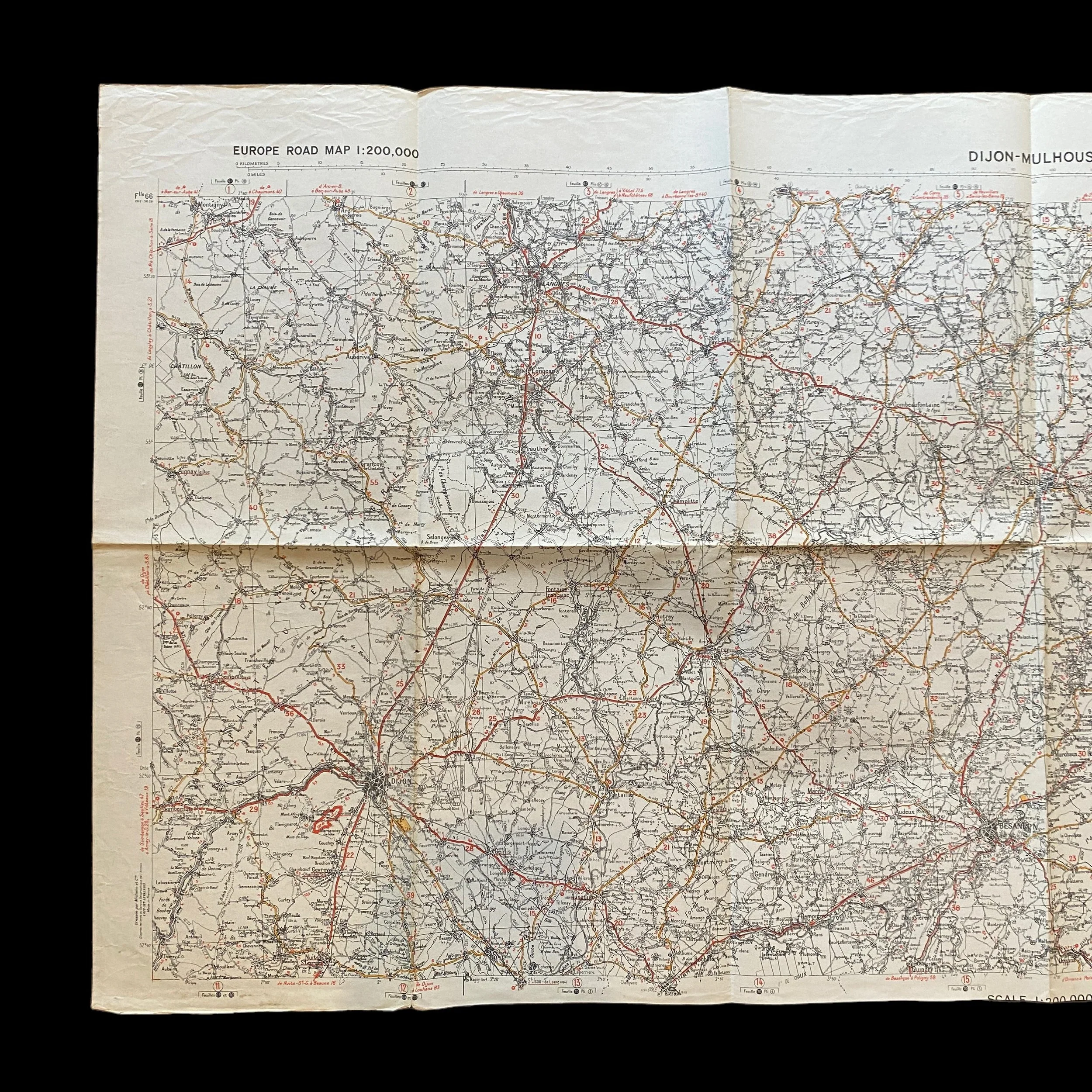

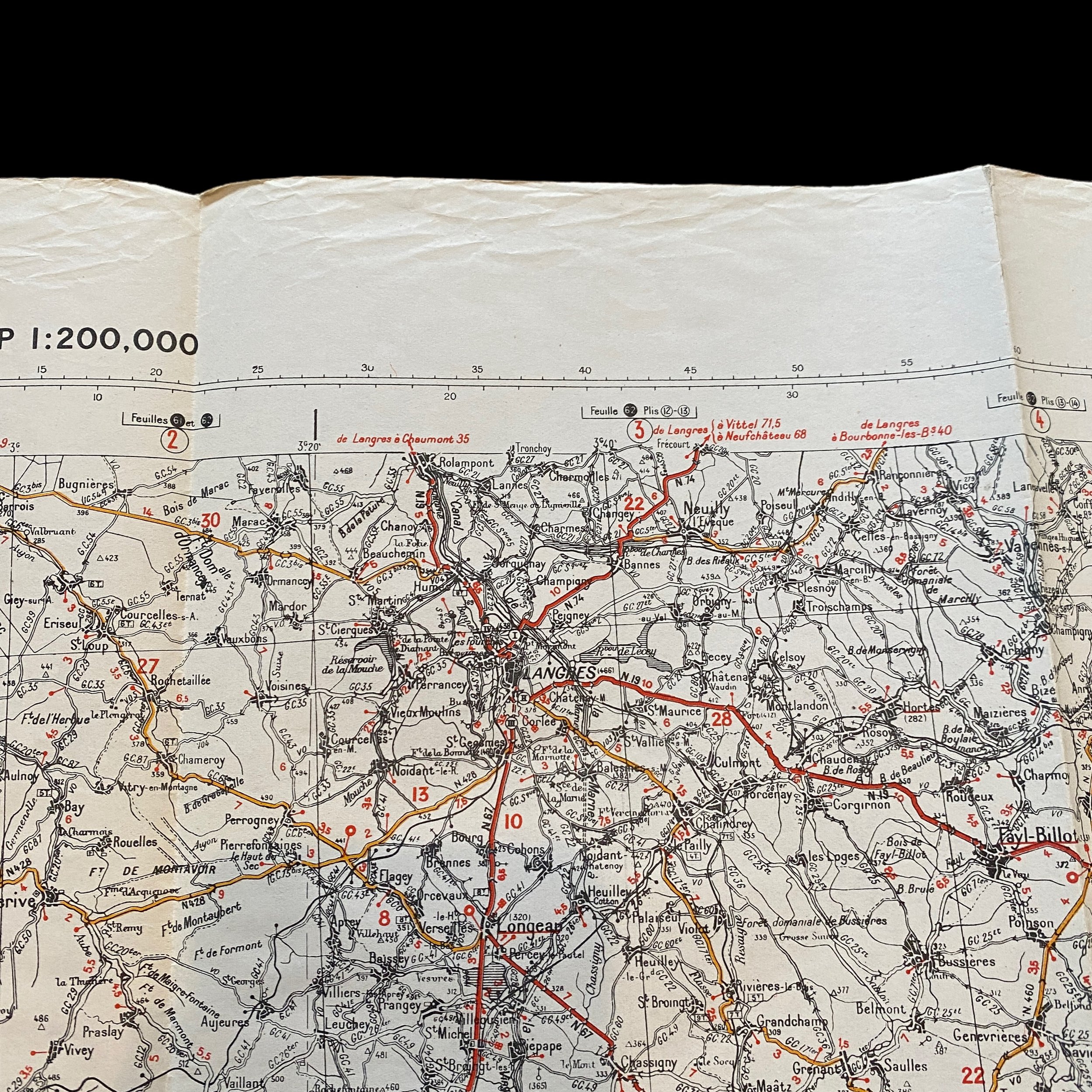










Early WWII DIJON - MULHOUSE "France to German Operations" Allied Infantry and Armored Division Combat Map*
Comes with C.O.A.
This original and rare museum-grade World War II combat map titled “DIJON - MULHOUSE” was published was used by Allied Infantry and Armored Divisions during Allied operations from France into Germany.
World War II marked one of the most significant conflicts in human history, characterized by vast theaters of operation and strategic maneuvers. The Allied advance from France into Germany played a pivotal role in the outcome of the war.
Strategic Significance of the Western Front:
Following the successful D-Day landings in June 1944, the Allies initiated a relentless push into German-occupied territory in Western Europe. The objective was clear: to breach the heavily fortified German defensive lines, dismantle their military infrastructure, and ultimately bring an end to the war in Europe. The Western Front became the focal point of this endeavor, with the Allied forces employing a combination of superior firepower, strategic planning, and tactical ingenuity to overcome formidable obstacles.
Key Cities and Strategic Operations:
Among the numerous cities targeted for liberation, Dijon, Mulhouse, Maiche, and Belfort held significant strategic value due to their geographical location and industrial importance. Dijon, situated in eastern France, served as a vital transportation hub and a gateway to German-occupied territories further east. The liberation of Dijon facilitated the Allied advance into the heart of Germany.
Mulhouse, located near the Swiss border, was another key objective. Its capture not only provided the Allies with a crucial logistical base but also denied the Germans access to important industrial resources. Maiche and Belfort, although smaller in size, were strategically located along the Franco-German border, forming part of the defensive network guarding against potential German counteroffensives.
The Allied advance into these cities involved a series of meticulously planned operations, often marked by fierce resistance from German forces. The Battle of Dijon, for instance, witnessed intense urban combat as Allied troops fought street by street to liberate the city from enemy control. Similarly, the capture of Mulhouse required coordinated efforts between infantry and armored units to overcome entrenched German positions.
Role of Maps in Combat:
Maps played a crucial role in guiding Allied forces through the complex terrain of Western Europe. Prior to any operation, military planners meticulously studied maps to identify key objectives, assess enemy positions, and plan routes of advance. For infantry and armored units engaged in frontline combat, maps provided essential information regarding terrain features, enemy fortifications, and potential obstacles.
Infantry units relied on detailed maps to navigate through unfamiliar terrain, identify suitable cover and concealment, and coordinate movements with neighboring units. Armored units, equipped with tanks and armored vehicles, used maps to identify favorable routes of advance, exploit enemy vulnerabilities, and coordinate with infantry support. In the fluid and dynamic nature of warfare, maps served as indispensable tools for maintaining situational awareness and executing tactical maneuvers effectively.
The U.S. and Allied advance from France into Germany during World War II represents a remarkable chapter in military history, characterized by strategic innovation, tactical brilliance, and unwavering determination. Through the liberation of key cities like Dijon, Mulhouse, Maiche, and Belfort, the Allies demonstrated their ability to overcome formidable obstacles and penetrate deep into enemy territory. The use of maps played a vital role in guiding infantry and armored units through the challenges of combat, enabling them to navigate complex terrain and achieve decisive victories. Ultimately, the Allied advance on the Western Front hastened the downfall of the Axis powers and paved the way for the liberation of Europe.